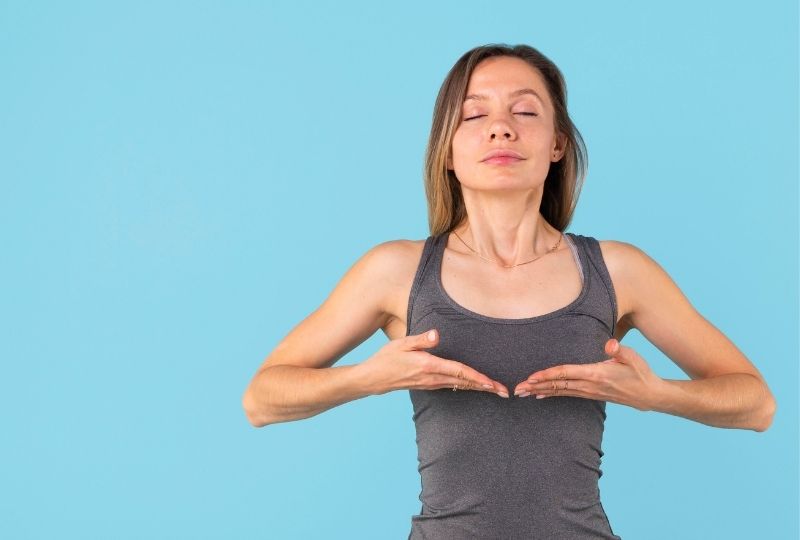Stress and anxiety are common in daily life, but one of the simplest and most effective ways to calm the mind and body is through controlled breathing. Breathing exercises activate the parasympathetic nervous system, which helps lower heart rate, reduce tension, and promote relaxation.
In this guide, you’ll learn powerful breathing techniques to reduce stress, manage anxiety, and bring a sense of calm to your daily life.
Why Breathing Helps with Stress and Anxiety
When you’re stressed, your body enters fight-or-flight mode, causing shallow and rapid breathing. This can lead to:
🔹 Increased heart rate and muscle tension
🔹 Feelings of panic or restlessness
🔹 Difficulty concentrating or making decisions
🔹 Poor sleep and increased fatigue
Practicing slow, deep breathing signals your brain that you’re safe, helping your body relax and return to a balanced state.
5 Effective Breathing Techniques for Stress and Anxiety
1. 4-7-8 Breathing (Relaxation Breath)
This technique is excellent for calming the nervous system and reducing anxiety quickly.
✅ How to Do It:
- Inhale deeply through your nose for 4 seconds.
- Hold your breath for 7 seconds.
- Exhale slowly through your mouth for 8 seconds.
- Repeat 4–5 times, focusing on each breath.
✅ Best For: Instant relaxation, better sleep, and anxiety relief.
2. Box Breathing (Navy SEAL Breathing Technique)
Used by military personnel and athletes, this technique helps improve focus and emotional control.
✅ How to Do It:
- Inhale deeply through your nose for 4 seconds.
- Hold your breath for 4 seconds.
- Exhale slowly through your mouth for 4 seconds.
- Hold your breath again for 4 seconds before repeating.
✅ Best For: Managing stress in high-pressure situations.
3. Diaphragmatic Breathing (Belly Breathing)
Most people breathe shallowly from their chest, which can increase stress. Belly breathing engages the diaphragm, allowing for deeper oxygen intake.
✅ How to Do It:
- Place one hand on your chest and the other on your belly.
- Inhale deeply through your nose, expanding your belly (not your chest).
- Exhale slowly through your mouth, feeling your belly contract.
- Repeat for 5 minutes, focusing on each breath.
✅ Best For: Reducing chronic stress, improving oxygen flow, and relaxation.
4. Alternate Nostril Breathing (Nadi Shodhana)
This traditional yogic breathing technique balances the nervous system and clears the mind.
✅ How to Do It:
- Close your right nostril with your thumb and inhale through your left nostril.
- Close your left nostril with your ring finger, open your right nostril, and exhale.
- Inhale through your right nostril, then switch and exhale through your left nostril.
- Repeat for 2–5 minutes, maintaining a slow, steady rhythm.
✅ Best For: Reducing anxiety, improving focus, and balancing energy.
5. 5-5-5 Breathing (Grounding Breath for Panic Attacks)
This technique is simple and effective for immediate stress relief.
✅ How to Do It:
- Inhale through your nose for 5 seconds.
- Hold your breath for 5 seconds.
- Exhale through your mouth for 5 seconds.
- Repeat until you feel calmer.
✅ Best For: Quick anxiety relief and grounding in stressful moments.
How to Make Breathing Exercises a Daily Habit
🔹 Set reminders → Practice for 5 minutes in the morning and before bed.
🔹 Combine with mindfulness → Use breathing while meditating or stretching.
🔹 Try during stressful moments → Use a technique before a meeting or when feeling overwhelmed.
🔹 Practice before sleep → Helps calm the mind for deeper rest.
Final Thoughts
Breathing is one of the most powerful tools for reducing stress and anxiety. By practicing even a few minutes a day, you can create a sense of calm, improve focus, and feel more in control of your emotions.
Which breathing technique will you try today? 😊
